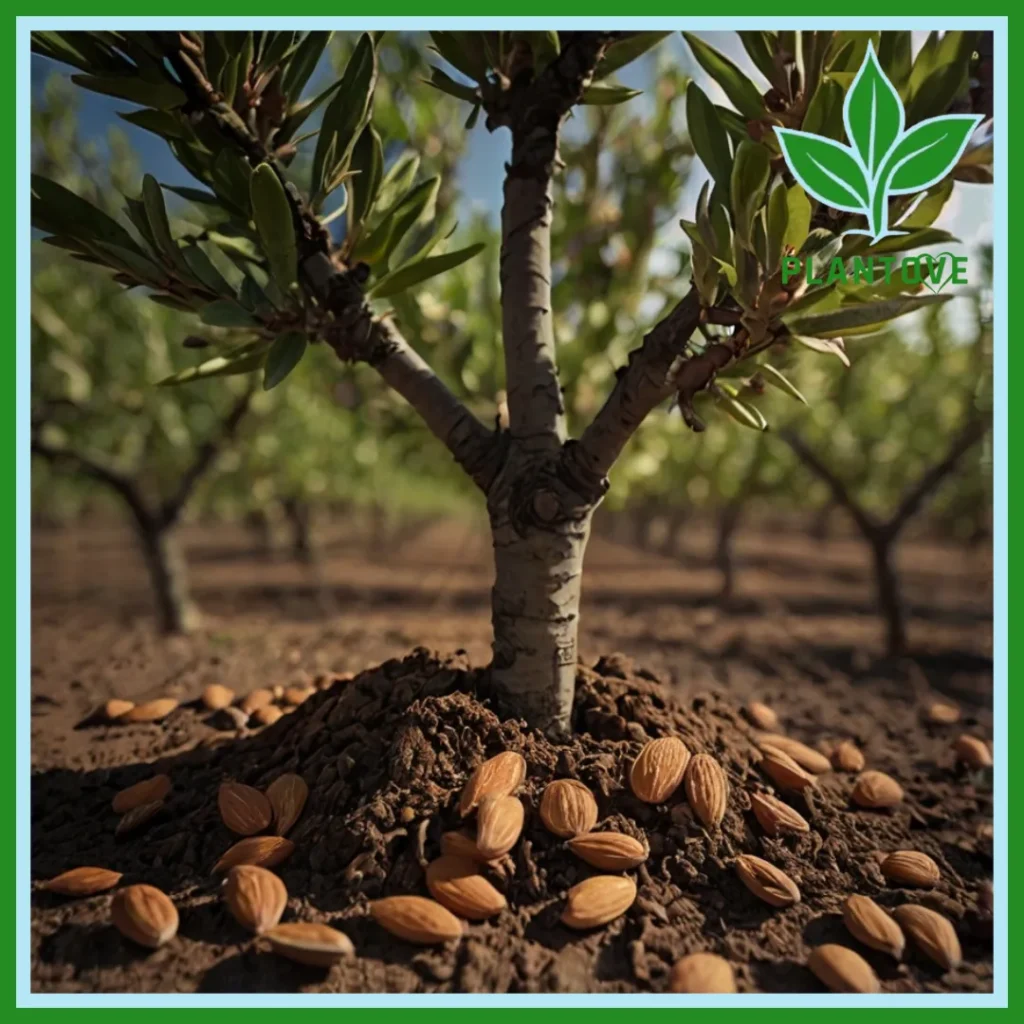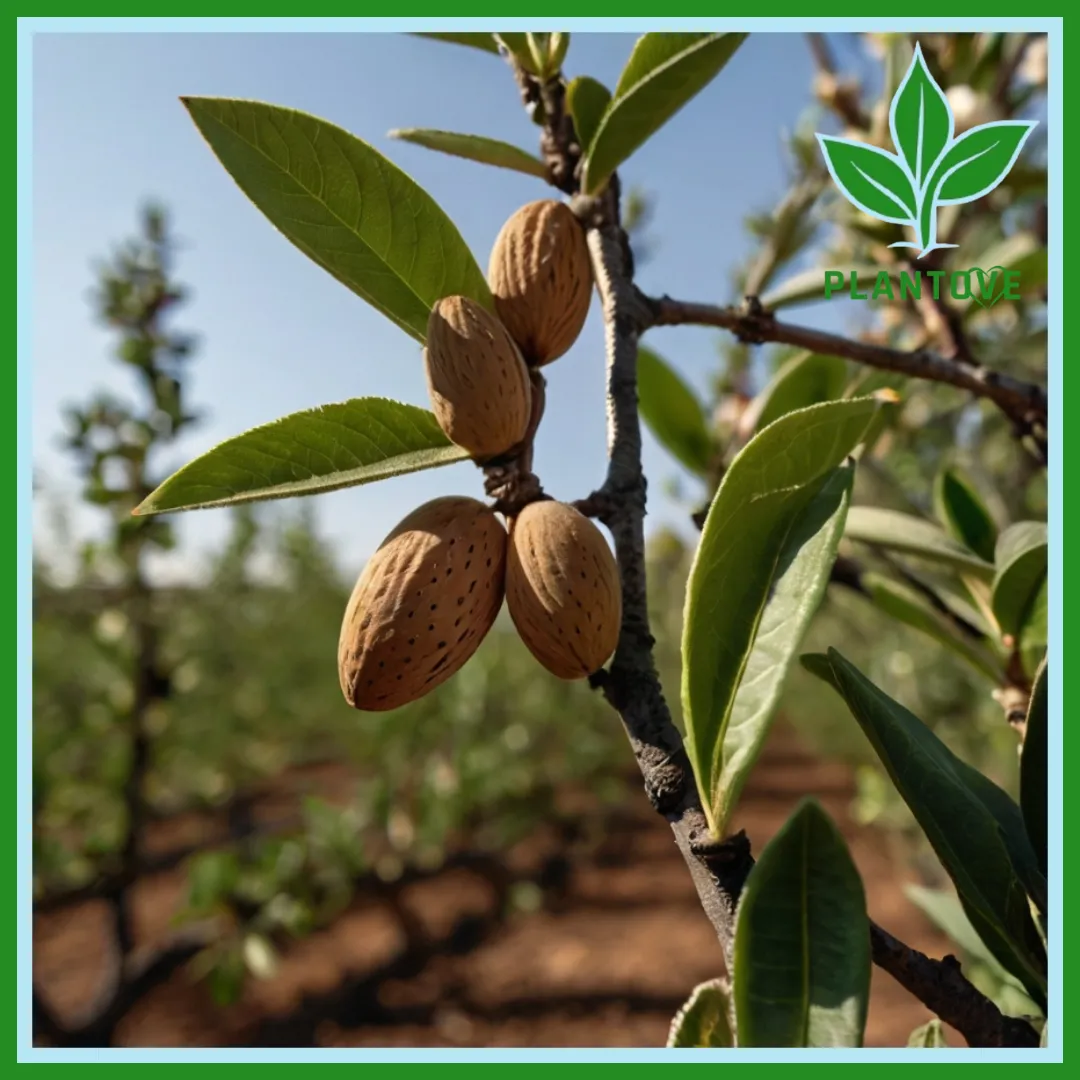The almond plant is more than just a source of the delicious and nutritious nut that has become a staple in diets worldwide. This versatile plant, known for its beautiful blossoms and long history, has been cultivated for centuries for both its fruit and ornamental value. In this article, we’ll explore everything you need to know about the almond plant, from its scientific background and cultivation tips to its numerous benefits.
Almond Plant Overview: Scientific Name and Family
The almond plant (Prunus dulcis), belongs to the Rosaceae family, the same family as peaches, apricots, and cherries. It is native to the Middle East and South Asia but has been widely cultivated in Mediterranean climates and other regions around the world. Though often referred to as a nut, the almond is technically the seed of the fruit of the almond tree.
Varieties of Almond Plants
There are two primary types of almonds:
- Sweet Almonds (Prunus dulcis var. dulcis) – These are the almonds commonly consumed as food and used in various products like almond milk, oil, and flour.
- Bitter Almonds (Prunus dulcis var. amara) – These contain natural toxins (amygdalin), which can be dangerous if consumed raw. However, they are processed to make almond extract and almond oil.
The Almond Plant’s Growth Cycle and Appearance
The almond plant grows best in warm, arid climates and is known for its beautiful, fragrant blossoms, which are often one of the earliest signs of spring. The plant can reach heights of 10 to 15 feet (3 to 4.5 meters) and features slender branches covered with ovate, finely serrated leaves.
Blossoming and Fruiting
The almond plant blooms in late winter or early spring, producing pale pink or white flowers. These blossoms later give way to the almond fruit, which is a drupe. The outer hull of the fruit encases a hard shell that contains the seed, commonly known as the almond. The almond fruit matures in the fall, when the hull splits open to reveal the seed.
Almond Plant Care

Proper almond plant care is essential to ensuring healthy growth and bountiful harvests. Below are the key elements to cultivating an almond plant successfully.
1. Soil Requirements
The almond plant thrives in well-drained, sandy or loamy soil with a slightly alkaline pH level (6.0-7.5). It does not do well in waterlogged conditions, so it’s essential to plant it in soil that drains efficiently. If you’re growing an almond plant in a container, be sure to use a potting mix that provides good aeration and drainage.
2. Sunlight
As a sun-loving plant, the almond plant requires full sunlight (at least 6-8 hours a day) to thrive. Position your almond tree in an area that gets ample sunlight throughout the day, ideally in a location that’s sheltered from strong winds.
3. Watering
While the almond plant is drought-tolerant, it requires regular watering, especially during its first few years of growth. Water deeply once or twice a week during the growing season, ensuring the soil remains moist but not waterlogged. Once established, almond plants are more resistant to dry conditions but still benefit from consistent moisture, especially during flowering and fruiting periods.
4. Pruning
Pruning plays a vital role in caring for the almond plant. It helps shape the tree, promotes healthy growth, and boosts fruit production. The ideal time to prune is during the dormant winter months. Focus on removing any dead or damaged branches, and thin out overcrowded areas to improve air circulation and allow more light to reach the plant.
5. Fertilizing
To ensure robust growth, fertilize the almond plant with a balanced fertilizer high in nitrogen during the growing season. Apply the fertilizer in early spring and again in late summer to support fruit development.
6. Pests and Diseases
The almond plant can be susceptible to various pests and diseases, such as aphids, spider mites, and fungal infections like powdery mildew. Regularly inspect the plant for any signs of infestation or disease and treat them promptly with insecticidal soap or neem oil. Ensuring proper spacing between plants, good air circulation, and maintaining healthy soil can help prevent many common issues.
Almond Plant Benefits

The almond plant offers a range of benefits, from its nutritional value to its positive impact on the environment.
1. Nutritional Benefits
Almonds are highly nutritious and provide a rich source of vitamins, minerals, and healthy fats. They are particularly high in vitamin E, magnesium, and protein. Regular consumption of almonds can help improve heart health, support brain function, and aid in weight management.
2. Environmental Benefits
The almond plant contributes positively to the environment. Almond orchards provide habitat for pollinators like bees, which are essential for biodiversity. Additionally, almond trees help improve soil health by contributing organic matter to the soil, and their deep root systems can enhance soil structure and water retention.
3. Medicinal Uses
In traditional medicine, almonds have been used for centuries to treat a variety of ailments. Almond oil, in particular, is known for its soothing properties and is commonly used to treat dry skin, inflammation, and digestive issues. The almond plant seeds, when consumed, are also believed to support overall well-being due to their nutrient-dense profile.
Almond Plant Seeds
The almond plant seeds are the most valuable part of the plant, as they are the actual almonds we eat. These seeds are packed with nutrients and can be consumed raw, roasted, or processed into various forms such as almond butter, almond oil, or almond milk.
1. Germination of Almond Seeds
If you’re interested in growing an almond plant from seed, it’s important to know that almonds require a period of cold stratification to germinate. This process mimics winter conditions and helps the seed prepare for growth.
- Step 1: Soak the almond seeds in water for 24 hours.
- Step 2: Place the seeds in a plastic bag with a moist paper towel and store them in the refrigerator for 4-6 weeks.
- Step 3: After the stratification period, plant the seeds in well-draining soil, about 2 inches deep, and keep them in a sunny, warm location. With proper care, the seeds will sprout within a few weeks.
2. Harvesting Almond Seeds
Once the almond fruit matures, the outer hull will split open, revealing the hard-shelled almond seed inside. To harvest the almonds, simply pick the ripe fruits, remove the hull, and allow the seeds to dry for a few days before consuming or storing them.
Almond Fruit: More Than Just a Nut
The almond fruit is a drupe, meaning it has a fleshy outer layer (the hull) that surrounds a hard shell. Inside this shell is the almond seed, which is the part most commonly consumed. While the flesh of the almond fruit is not typically eaten, the hulls are often used in animal feed or processed into biomass for other uses.
1. Uses of Almond Fruit
In addition to the seed, almond trees offer a range of by-products. The hulls can be used as livestock feed or composted to enrich soil. The shells are often used as a sustainable fuel source or in manufacturing products like particleboard. These uses make the almond plant highly sustainable, with minimal waste.
2. Almond Fruit in Culinary Applications
While the primary use of the almond fruit is for its seeds, almonds are a versatile ingredient in both sweet and savory dishes. Almonds are commonly used in baking, as a topping for salads, in almond-based milk and butter, and even in cosmetics due to their moisturizing properties.
Almond Plant Propagation
Almond plant propagation can be done through seeds or cuttings, though most commercial almond trees are propagated through grafting to ensure desirable traits such as fruit quality and disease resistance.
1. Seed Propagation
As mentioned earlier, almond seeds can be germinated through cold stratification. However, it’s important to note that almond trees grown from seed may not always produce fruit that is identical to the parent plant due to genetic variation.
2. Grafting
Grafting is a more reliable method of almond plant propagation, especially for commercial growers. In grafting, a healthy almond plant is attached to the rootstock of a different tree to combine the best qualities of both plants. This method ensures that the new plant will have the same characteristics as the parent plant, such as high-quality fruit and disease resistance.
Conclusion
The almond plant is a remarkable addition to both commercial orchards and home gardens. Its beautiful blossoms, nutritious seeds, and environmental benefits make it a valuable and versatile plant. Whether you’re growing almonds for their delicious fruit or simply enjoying the beauty of the tree in your garden, understanding the essentials of almond plant care, propagation, and its numerous benefits will help you cultivate a thriving, healthy plant.
With the right care, your almond plant can provide you with years of enjoyment and a bountiful harvest of nutrient rich almonds. Happy planting!

